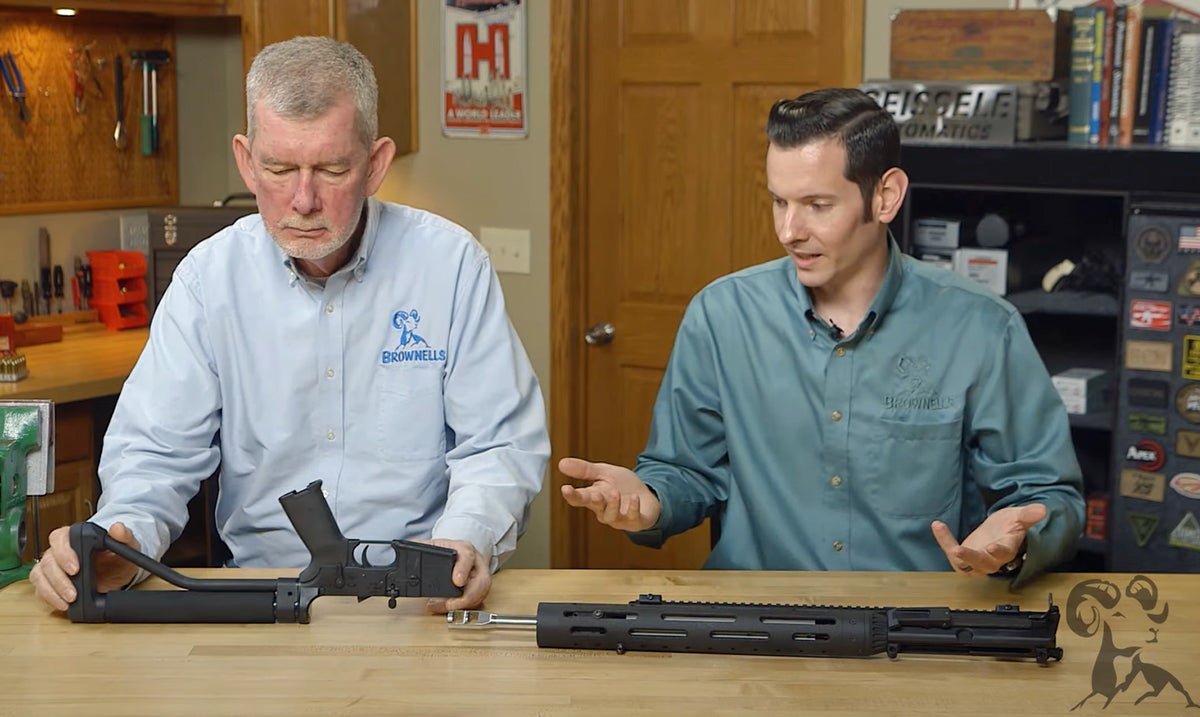Billet vs Forged AR Receivers: Which is Stronger?
Russ Chastain 12.07.20

(Image: Screenshot from billet vs forged video)
If you read much about ARs (or MSRs if you prefer that term), you’ll find a lot of discussion about billet vs forged receivers. Is one better or stronger than the other? And does it really matter when it comes the AR platform?
In this episode of Brownells Smyth Busters, Steve and Caleb take on the internet myth that a billet receiver — or billet anything — is stronger than something that’s been forged rather than machined.
The fact is that forging forms a tougher, stronger product than machining, which is what billet parts are (they’re cut from a block of metal).
When it comes to billet vs forged aluminum receivers, Caleb talks about grain and likens it to wood grain, and says forging forces the grain to follow the contours of a receiver, trigger guard, etc — while billet machining leaves the part with all the grain in one direction and simply cuts the shapes. Kinda like cutting it out of a plank of wood, when you think of the grain.
Steve opines that when it comes to steel parts such as hammers and sears, the comparison is often billet vs cast, in which case billet is stronger. But that’s sort of a non-sequitur in a billet vs forged discussion.
So why would anyone opt for a billet receiver instead of forged? Because most forged AR receivers are pretty much mil-spec, so if you want one with a unique shape you’ll probably have to go with billet construction.
And the bottom line is, billet is plenty strong for an AR receiver.
Enjoy the video.
